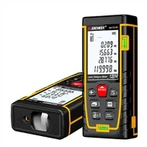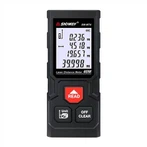How to use a multimeter to measure the quality of a frequency converter
In the design process of electronic circuits, engineers inevitably need a multimeter to measure some measuring instruments. Engineers all know that a multimeter can measure DC current, AC voltage, and DC voltage. The frequency converter controls the equipment of the AC motor by modifying the operating power frequency of the motor. This article will explain how to use a multimeter to measure the quality of a frequency converter.
It should be noted that for personal safety, the machine must be powered off and the input power lines R, S, T and output lines U, V, W of the frequency converter must be removed before operation! First, set the multimeter to the "secondary tube" position, and then use the red and black probes of the multimeter to check according to the following steps:
The black probe contacts the negative pole P (+) of the DC bus, while the red probe contacts R, S, and T in sequence. Record the displayed value on the multimeter. Then touch the red probe with N (-) and the black probe with R, S, and T in sequence, and record the displayed value of the multimeter. If the six displayed values are basically balanced, it indicates that there is no problem with the rectifier module or soft start resistor of the inverter diode. Conversely, if the rectifier module or soft start resistor at the corresponding position is damaged, the phenomenon is: no display.
The red probe contacts the negative pole P (+) of the DC bus, while the black probe contacts U, V, and W in sequence. Record the displayed value on the multimeter. Then touch the black probe with N (-) and the red probe with U, V, and W in sequence, and record the displayed value of the multimeter. If the six displayed values are basically balanced, it indicates that there is no problem with the IGBT inverter module of the frequency converter. Conversely, if the IGBT inverter module at the corresponding position is damaged, the phenomenon is: no output or a fault is reported.
Drag a power matched asynchronous motor on site with a frequency converter to operate without load, adjust the frequency f, and start decreasing from 50Hz until the lowest frequency is reached.
During this process, use an ammeter to detect the no-load current of the motor. If the no-load current remains stable and basically unchanged during the frequency decrease process, then it is a good frequency converter.
The minimum frequency can be calculated as follows: (synchronous speed rated speed) x number of poles p ÷ 60. For example, a 4-pole motor with a rated speed of 1470 rpm and a minimum frequency of (1500-1470) x 2 ÷ 60=1Hz.
There is no problem with the soft start resistor. Conversely, if the rectifier module or soft start resistor at the corresponding position is damaged, there is no display.
The red probe contacts the negative pole P (+) of the DC bus, while the black probe contacts U, V, and W in sequence. Record the displayed value on the multimeter. Then touch the black probe with N (-) and the red probe with U, V, and W in sequence, and record the displayed value of the multimeter. If the six displayed values are basically balanced, it indicates that there is no problem with the IGBT inverter module of the frequency converter. Conversely, if the IGBT inverter module at the corresponding position is damaged, the phenomenon is: no output or a fault is reported.
Drag a power matched asynchronous motor on site with a frequency converter to operate without load, adjust the frequency f, and start decreasing from 50Hz until the lowest frequency is reached.
During this process, use an ammeter to detect the no-load current of the motor. If the no-load current remains stable and basically unchanged during the frequency decrease process, then it is a good frequency converter.
The minimum frequency can be calculated as follows: (synchronous speed rated speed) x number of poles p ÷ 60. For example, a 4-pole motor with a rated speed of 1470 rpm and a minimum frequency of (1500-1470) x 2 ÷ 60=1Hz.
Distinguishing between AC and DC solid-state relays: Usually, the input and output terminals of the DC solid-state relay housing are marked with "+" and "-" symbols, and the words "Dc input" and "DC output" are indicated. However, AC solid-state relays can only indicate "+" and "-" symbols on the input end, and there is no distinction between positive and negative at the output end.
Discrimination between input and output terminals: An unmarked solid-state relay with a multimeter in R × 10k range is used to distinguish between input and output terminals by measuring the forward and reverse resistance values of each pin separately. When the forward resistance of a certain two pins is small and the reverse resistance is infinite, these two pins are the input terminals, and the other two pins are the output terminals. In a measurement with a smaller resistance value, the black probe is connected to the positive input terminal and the red probe is connected to the negative input terminal.
If the forward and reverse resistance of a certain two pins are both 0, it indicates that the solid-state relay has been broken down and damaged. If the forward and reverse resistance values of each pin of the solid-state relay are measured to be infinite, it indicates that the solid-state relay has been opened and damaged.






